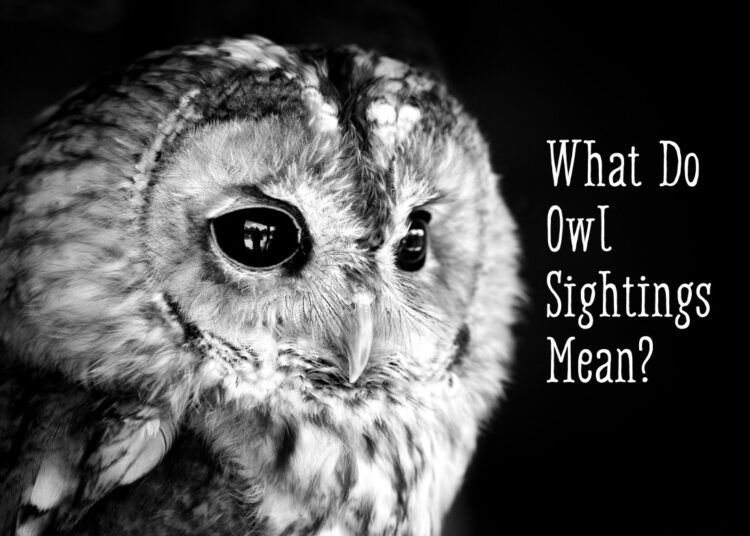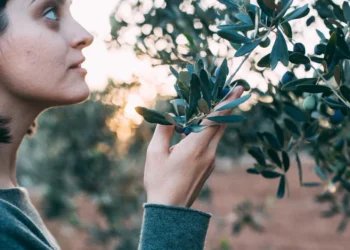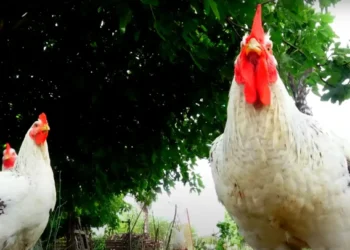The Cultural Significance of Owls in Different Societies
Owls have been a part of human culture for thousands of years, and their significance varies greatly across different societies. In some cultures, owls are revered as symbols of wisdom and knowledge. For example, in ancient Greece, the goddess Athena was often depicted with an owl on her shoulder, representing her intelligence and wisdom. In Hinduism, the goddess Lakshmi is sometimes depicted riding an owl as a symbol of wealth and prosperity.
In other cultures, however, owls are seen as symbols of death or bad luck. In many Native American cultures, for example, owls are associated with death and are believed to be harbingers of bad news. Similarly, in some parts of Africa and Asia, owls are believed to bring sickness or even death to those who see them.
Examples:
- Athena – Greek Goddess of Wisdom
- Lakshmi – Hindu Goddess of Wealth
- Native American cultures – associated with death
- Africa and Asia – believed to bring sickness or death
How Owls Differ from Other Birds in Terms of Physical Characteristics and Behavior
Owls have several physical characteristics that set them apart from other birds. First and foremost is their unique facial structure: unlike most birds, owls have flat faces with large eyes that face forward instead of to the sides. This gives them excellent depth perception and allows them to hunt effectively at night.
Owls also have specialized feathers that help them fly silently through the air. Their wings have fringed edges that break up the sound waves created by their flight, making them almost completely silent as they swoop down on their prey.
Physical Characteristics:
- Flat faces with large forward-facing eyes
- Specialized feathers for silent flight
In terms of behavior, owls are primarily nocturnal and hunt at night. They are also solitary creatures, preferring to live alone or in small family groups. Unlike many other birds, owls do not build nests; instead, they often take over abandoned nests of other birds or use natural cavities in trees.
Behavior:
- Nocturnal
- Solitary creatures
- Do not build nests
Exploring Myths and Superstitions Associated with Seeing an Owl
Owls have long been associated with myths and superstitions, both positive and negative. In some cultures, seeing an owl is believed to be a sign of good luck or even a visit from a deceased loved one. In others, however, it is seen as a bad omen or a sign of impending death.
In some Native American cultures, for example, seeing an owl is believed to be a warning that someone in the community will die soon. Similarly, in parts of Africa and Asia, owls are believed to bring sickness or even death to those who see them.
Positive beliefs:
- A visit from a deceased loved one
- A sign of good luck
Negative beliefs:
- A bad omen
- A warning that someone will die soon
- Believed to bring sickness or death
Spiritual and Mystical Interpretations of Owl Sightings
Owls have been associated with spiritual and mystical beliefs for centuries. In many cultures, they are seen as symbols of wisdom, intuition, and the ability to see beyond what is immediately visible. Some people believe that seeing an owl can be a sign of spiritual growth or enlightenment.
In some Native American cultures, owls are believed to be messengers from the spirit world. Similarly, in Celtic mythology, owls were often associated with magic and prophecy.
Symbolism:
- Wisdom
- Intuition
- The ability to see beyond what is immediately visible
Beliefs:
- Messengers from the spirit world
- Associated with magic and prophecy
Studying Owl Behavior and Communication: Insights from Science
Owls have long fascinated scientists due to their unique physical characteristics and behavior. In recent years, researchers have made significant advances in understanding how owls communicate with each other and navigate through their environment.
One key area of research has focused on how owls use sound to locate prey. Owls have highly developed hearing abilities, which allow them to pinpoint the location of prey even in complete darkness. Researchers have found that owls use a variety of vocalizations to communicate with each other, including hoots, screeches, and hisses.
Research areas:
- How owls use sound to locate prey
- Vocalizations used to communicate with each other
Owls in Their Ecosystem: Understanding Their Role in the Food Chain
Owls play an important role in their ecosystems as top predators. They help control populations of rodents and other small mammals, which can have a significant impact on plant growth and other animals in the food chain. Owls also provide food for larger predators such as eagles and coyotes.
In some areas, however, human activity has disrupted the natural balance of owl populations. Habitat destruction and hunting have led to declining owl populations in many parts of the world.
Role in ecosystem:
- Top predators that help control populations of rodents and small mammals
- Provide food for larger predators such as eagles and coyotes
Human Impact on Owl Populations: Habitat Destruction and Hunting
Human activity has had a significant impact on owl populations around the world. Habitat destruction is one of the biggest threats facing owls; as forests are cleared for development or agriculture, owls lose their homes and hunting grounds. In some areas, invasive species have also had a negative impact on owl populations by competing with them for food or taking over their nests.
Hunting is another major threat to owl populations. In some cultures, owls are hunted for their meat or feathers; in others, they are killed because they are seen as pests or bad omens. Even where hunting is not legal, owls may be accidentally killed by traps or other methods used to control rodent populations.
Threats:
- Habitat destruction
- Invasive species
- Hunting for meat or feathers
- Killed as pests or bad omens
The Legal and Ethical Considerations of Owning an Owl as a Pet
Owning an owl as a pet can be a tempting proposition for some people, but it comes with significant legal and ethical considerations. In many countries, it is illegal to own an owl without a special permit, and even with a permit, there are strict regulations governing the care and treatment of captive owls.
From an ethical standpoint, owning an owl as a pet raises questions about the welfare of the animal. Owls are wild animals that require specialized care and attention; they may become stressed or aggressive in captivity, and their natural behaviors may be suppressed.
Legal considerations:
- Illegal to own without a special permit in many countries
- Strict regulations governing care and treatment of captive owls
Ethical considerations:
- Owls are wild animals that require specialized care and attention
- Potential for stress or aggression in captivity
- Natural behaviors may be suppressed
Different Types of Owls Around the World: Adaptation to Environments
Owls come in many different shapes and sizes, and they have adapted to a wide range of environments around the world. Some of the most common types of owls include the barn owl, which is found in many parts of the world and is known for its distinctive heart-shaped face; the snowy owl, which lives in the Arctic tundra and has white feathers that help it blend in with its environment; and the great horned owl, which is found throughout North and South America and is known for its distinctive ear tufts.
Each type of owl has unique adaptations that help it survive in its particular environment. For example, burrowing owls are able to dig their own nests in sandy soil, while elf owls are able to survive in hot desert climates by slowing down their metabolism during the day.
Common types:
- Barn owl
- Snowy owl
- Great horned owl
Adaptations:
- Burrowing owls can dig their own nests
- Elf owls slow down their metabolism during hot desert days
The Depiction of Owls in Art and Literature Throughout History
Owls have been a popular subject for artists and writers throughout history. In ancient Greece, for example, owls were often depicted on pottery and other decorative objects as symbols of wisdom and knowledge. Similarly, in medieval Europe, owls were often associated with magic and witchcraft.
In literature, owls have been featured prominently in works ranging from children’s books like “Winnie-the-Pooh” to classic literature like Shakespeare’s “Macbeth.” They are often used as symbols of wisdom, mystery, or foreboding.
Artistic depictions:
- Ancient Greece – symbols of wisdom and knowledge
- Medieval Europe – associated with magic and witchcraft
Literary works:
- “Winnie-the-Pooh”
- Shakespeare’s “Macbeth”
Health Risks Associated with Encountering an Owl: What You Need to Know
While owls are generally not aggressive towards humans, there are some health risks associated with encountering them in the wild. One potential risk is contracting a disease from their droppings or feathers; owls can carry a variety of diseases that can be transmitted to humans through contact with contaminated surfaces.
In addition, owl attacks can cause serious injuries. While attacks on humans are relatively rare, they can occur if an owl feels threatened or if someone gets too close to their nesting area.
Potential health risks:
- Diseases transmitted through contact with droppings or feathers
- Owl attacks causing serious injuries
Protecting Yourself from Owl Attacks or Disturbances to Your Property
If you live in an area where owls are common, there are several steps you can take to protect yourself and your property from owl attacks. One key step is to avoid disturbing nesting areas; if you see an owl near its nest, it is best to give it plenty of space and avoid making loud noises or sudden movements.
You can also take steps to protect your property from owl damage. For example, covering vents and other openings with wire mesh can prevent owls from nesting in your attic or chimney.
Protecting yourself:
- Avoid disturbing nesting areas
- Give owls plenty of space
Protecting your property:
- Cover vents and other openings with wire mesh
Owl Adaptations for Survival in the Wild: Unique Abilities and Features
Owls have a number of unique adaptations that help them survive in the wild. One key adaptation is their ability to fly silently; this allows them to sneak up on prey without being detected. Owls also have excellent night vision, thanks to their large eyes and specialized retinae.
In addition, owls have powerful talons that they use to catch and kill prey. Their beaks are also specially adapted for hunting; some species have sharp hooks at the end of their beaks that they use to tear apart their prey.
Adaptations:
-
- Silent flight
- Excellent night vision
- Powerful talons for catching prey
In conclusion, seeing an owl may have different meanings depending on one’s cultural beliefs and personal experiences. However, it is often associated with wisdom, intuition, and spiritual guidance.






